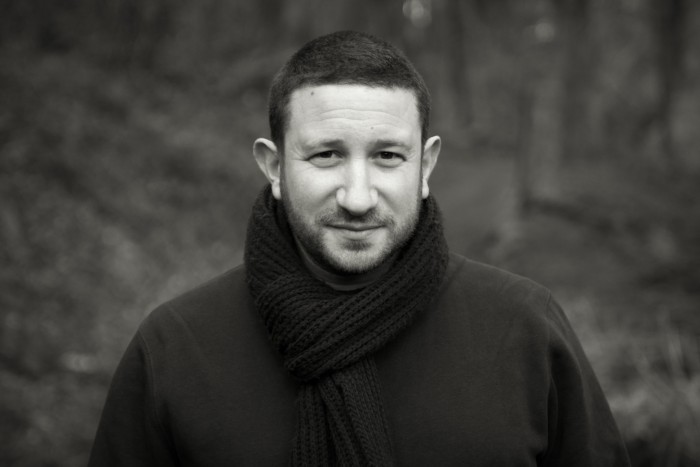Adam Bronkhorst has been shooting weddings since 2005, specialising in unique and alternative weddings across the UK. Adam also teaches and runs workshops for photographers on using lighting. We caught up with Adam to find out more about his work and his top tips for taking photographs in difficult lighting.

How long have you been working as a photographer?
I became a full time professional photographer in 2008, but I would say I’ve been a photographer all my life. As a kid I always had a point and shoot film camera on me, and have been documenting my own life since 1987. I was always fascinated by my mum’s SLR camera and I loved looking through it, getting the image in focus and lining up shots. I had a disc film camera when I was at school, and in 1990 I began studying photography at art college. I went on to do a degree in Fine Arts in 1996, and used photography in my studies. I was an early adopter of digital cameras and got my first one in 2002, then got my hands on my first DSLR camera in 2005.
What inspires your photography?
I get inspiration from lots of things. I love looking at other people’s photography; I really enjoy films and take inspiration from modern culture. I’d happily while away an afternoon walking round an art gallery looking at renaissance paintings and their composition, poses etc. I get inspired by the people that I take portraits of, the wedding couples I shoot, and the other photographers that I train on workshops. Like most photographers, I have an inbuilt desire to improve my work. There is a great quote by a photographer Imogen Cunningham, who said “My favourite photo? The one I’m about to take.”
How do you prepare for a shoot where you know lighting might be a tricky issue?
There isn’t a set formula that I use. Each different location has its own challenges. Sometimes I’ll visit a venue beforehand, sometimes I just have a good look and decide on the day. I generally just know what I’m going to do when I see the place; I think it’s an in built feeling. I always joke that I use ‘the force’ but it is kind of like that. I spoke to a director of photography who works on Hollywood films about it a few years ago, and we came to the conclusion that it comes from experience and practice. You just develop a feeling of where to put lights, what to light, what you’ll need, how you want it to look. Of course there is always a bit of trial and error, but it’s about having the confidence to say ‘no, let’s start again’ and never settling for anything that you are not happy with.
What equipment do you use when there is limited lighting?
I’ll always take at least two or three flashes that I can use off the camera. I have three old Nikon flashes that I don’t use on my camera and a newer one that can go on top of the camera. This gives me four lights, should I need them, but I only use three in one go. I have light stands and umbrellas for the flashes off camera as well. I suppose the amount of equipment is pretty basic if you think about how much a photographer taking a commercial shoot would need. I try to keep things simple: it’s much better to be clever with your gear and not have it get in the way of what you are doing.
What do you find most stressful about shooting a wedding in difficult lighting?
I don’t find it particularly stressful. I’ve encountered most situations in the years that I’ve been doing it. But I always joke that if I had my own wedding venue, I would make it the perfect venue to photograph a wedding in. All the light bulbs would be colour balanced for daylight, none of those orange bulbs that make everyone look like they are covered in spray tan! I’d also avoid any red walls and keep any wall coverings neutral. I think it’s really important for a bride and groom to look good in their photos and venue organisers should do everything that they can to help the clients, as well as the venue, look great.
What do you find most satisfactory about shooting in difficult lighting?
I love how it really pushes me to be creative and to have fun with the lighting. It means that I am in control of the lighting and how I want things to look. It gets me thinking about what I can do and how far I can push things. I shot at Rise Hall in Yorkshire a while back and I knew that they didn’t have any flood lighting at the front of the venue, so had probably never seen a shot of it at night. I ended up lighting it with a red flash and a blue flash, and ultimately I got a completely original image. I get satisfaction out of giving my clients unique and creative wedding images.
What would be your top tips for shooting in difficult lighting?
It’s so difficult to know where to start. I teach workshops to wedding photographers all about lighting and it takes a full day to impart that knowledge. But I suppose I would say to remember that as a photographer you are in control of the lighting: think about what you want to do and do anything you need to make it work for you. Switch lights on or off, move lamps, move the couple.
Is there a wedding photographer whose work you admire for their ability to shoot in difficult lighting?
There are a couple of amazing American photographers who I think are really creative with light. They have a really good understanding of light, whether using natural light, light available at the venues, or their own lights. I really admire their work. The first is Jeff Newsom and the second is Matt at Our Labour of Love. They both use light in really creative ways and make things work for them. That’s the sign of a great wedding photographer, the ability to capture great images in any lighting situation.
What is the biggest challenge about shooting a winter wedding?
In the UK it gets dark at around 4pm in winter, so for most of the day you are shooting after the sun has gone down. Ultimately it’s down to you to capture the memories for the clients; they just want it to look great on the day and for the images to reflect that. I’ve had brides turn all the lights out just before the first dance as they wanted a candle lit dance and the challenge is coming up with something that works for the couple.
What do you always carry in your camera bag as ‘just in case’ equipment at winter weddings?
I tend to take the same kit as I do for summer weddings. In fact, the only thing I take to winter weddings that I wouldn’t take to a summer wedding is a coat! It’s not so much about the equipment as knowing how to use it. As photographers we capture light, and that is it. So many people who attend my workshops say they are natural light photographers, but that they panic when it comes to winter weddings and low light situations. That’s where I come in and show them how simple lighting techniques that can be applied to most situations. By the end of the workshop they go away saying they are photographers, not just in natural light but in any light.
What has been your favourite winter wedding assignment and why?
I shot a wedding in London’s Soho at the beginning of this year. When it came time for the couple’s shots, the heavens opened and we got about two weeks’ worth of rain in twenty minutes. So I just looked around the venue, and used my creativity and all the ideas I had come up with during the break to get some really alternative and unique images. We shot against a plain wall in the corridor by the stairs and used some curtains in the room where the ceremony had taken place 10 minutes before. We staged an area to shoot in, shot in the bar, and even out in the rain. The images were so much more creative and special because I was forced to use my initiative.
Adam shoots weddings under the name Viva Wedding Photography and he regularly teaches lighting workshops at the Photography Farm.

